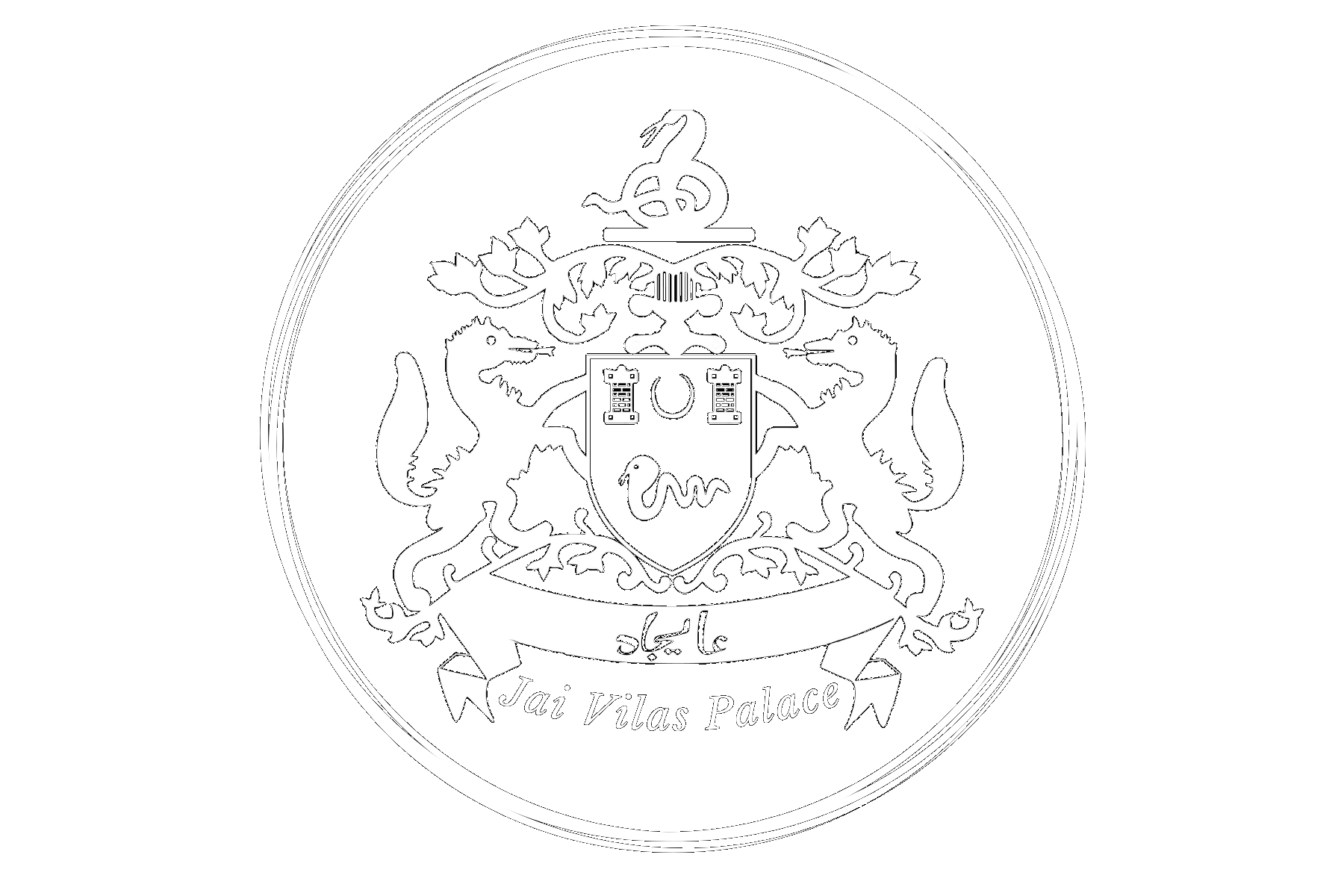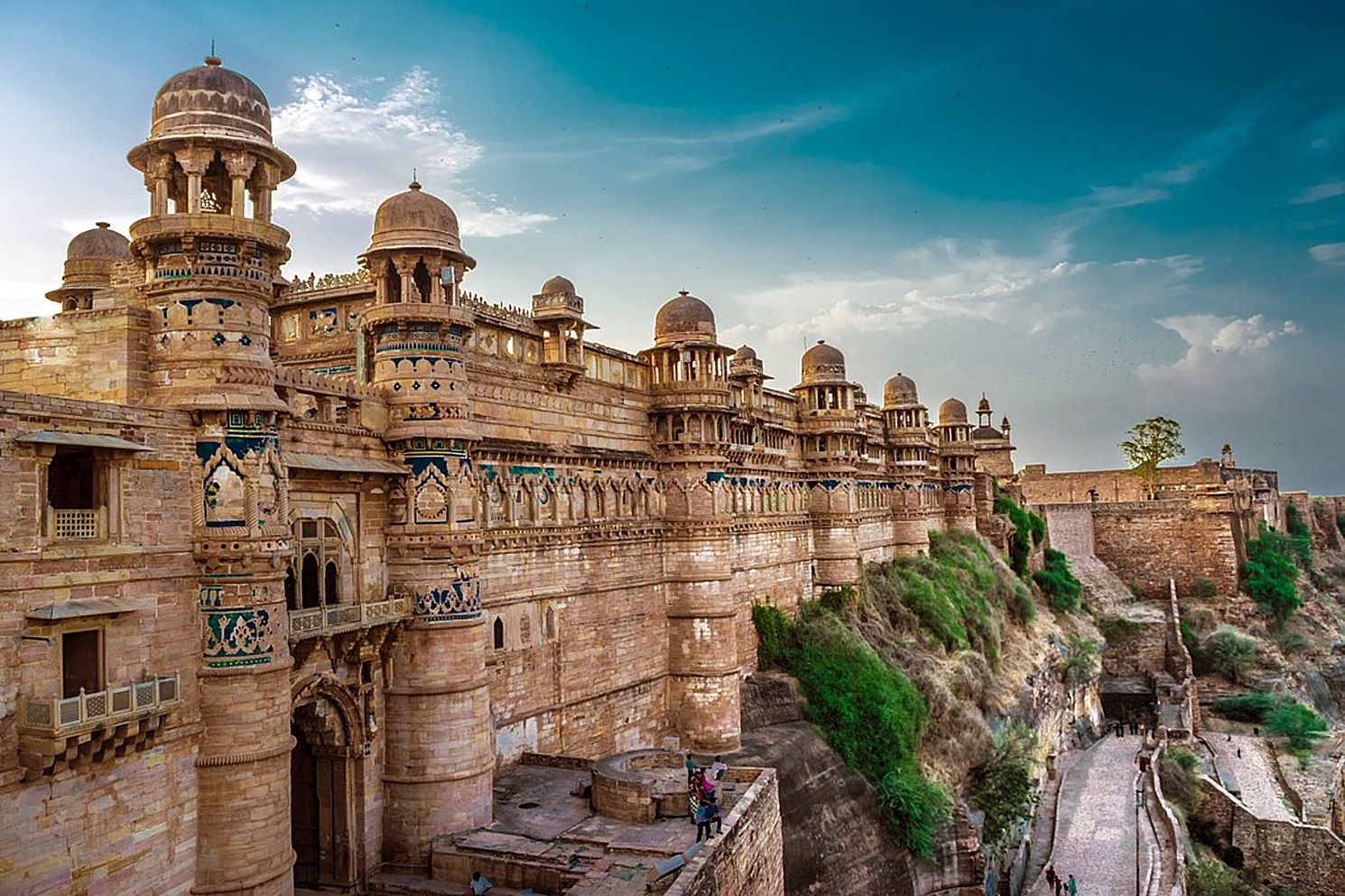Making of modern Gwalior.
Gwalior State
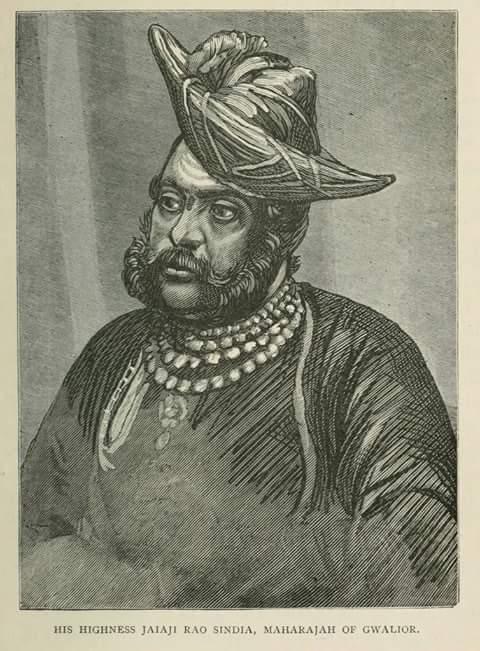
Maharaja Jayajirao Scindia’s reforms
After his reinstatement, Maharaja Jayajirao Scindia devoted nearly three decades of his reign to improving conditions in his dominions. Important reforms were introduced in every department of administration. So able was the management of the State that by the third quarter of the century, Gwalior had completely recovered from the desolation of 70 years previously. From Maharaja Jayaji Rao’s reign begins the policy of investing a portion of State funds in enterprises which would not only assist revenues but also foster further prosperity. One of the first of these steps was taken in 1872 when the State lent Rs. 75 lakhs for the construction of the Agra-Gwalior portion of the Great Indian Peninsular Railway. In the following year a similar amount was advanced for the Indore-Nimach section of the Rajputana-Malwa Railway. The gifted Maharaja was now becoming widely known. A personal salute of 21 guns was bestowed in 1877 and the Maharaja became a Counsellor of the Empress. By 1886 he was able to realize one of the great wishes of his life, the restoration of Gwalior Fort and Morar Cantonment, both of which had been in British hands since 1858. When Maharaja Jayaji Rao passed away in 1886, he was able to leave to his son, Madhav Rao, a boy in his tenth year, a prosperous state and ample resources which were excellent foundations for the brilliant career that lay ahead of a new Maharaja. A Council of Regency conducted Gwalior’s administration until 1894, when the new ruler took over the reins of government, and a new and even more remarkable era of progress began for the State.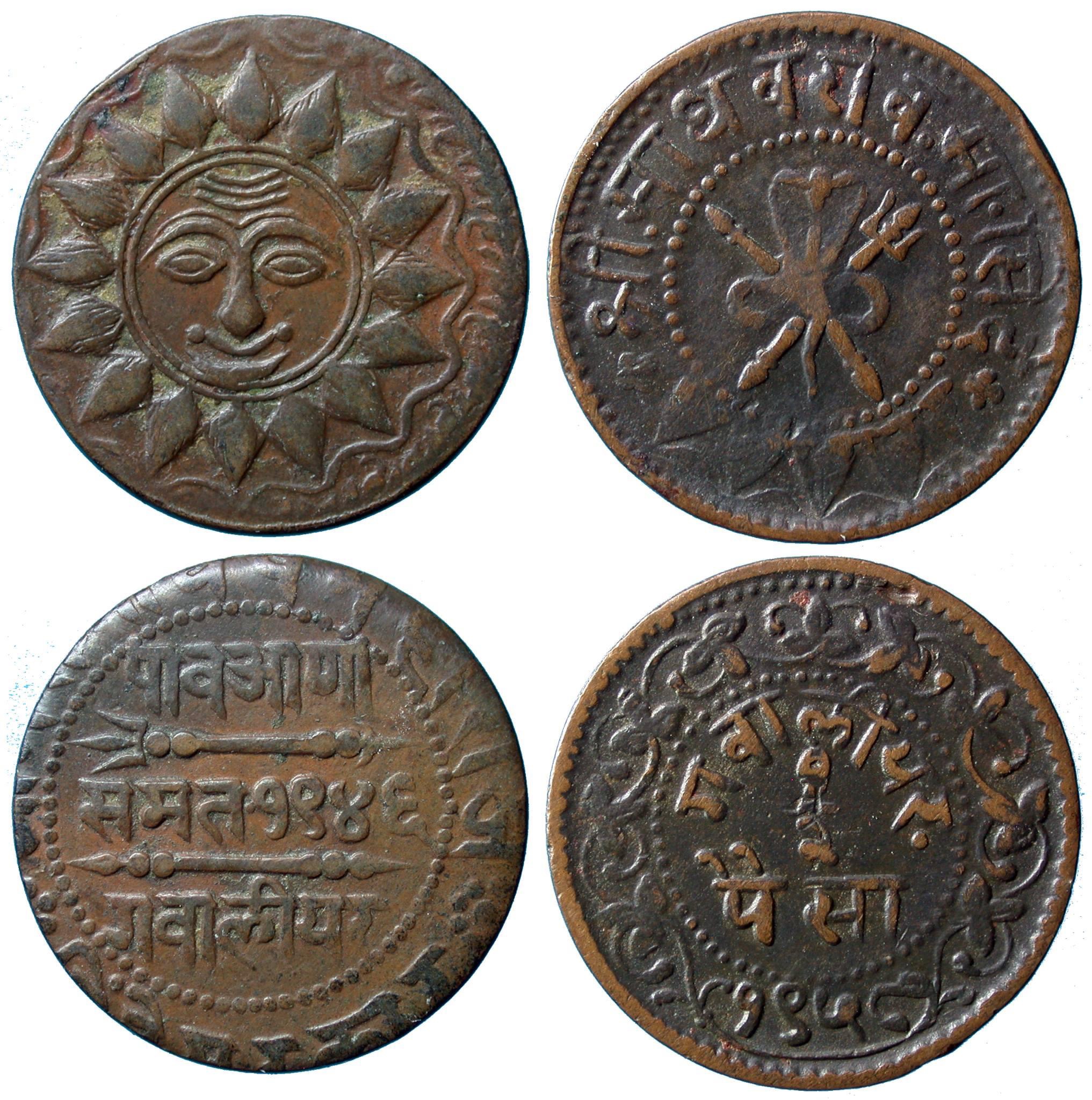
Maharaja Madho Rao Scindia’s financial reforms
should not be thought that Maharaja Madho Rao was occupied solely with administrative detail. He soon proved to his people that he had foresight, creative ability and energy far above the ordinary. For example, even the resources and prosperity bequeathed by Jayaji Rao, it would have been easy to go ahead with reforms without taking too much trouble to ensure that in future the necessary financial resources would be there to smooth the path of progress. Maharaja Madhav Rao realised very fully that progress needs a cash backing, and that no one can possibly be sure how long prosperity will last. Consequently, although financially the State seemed to be going from strength to strength in the boom years during his reign, he insisted that surplus funds be invested to provide income for the progressive undertakings which he initiated. The compulsory 20—23 per cent, saving instituted by him has made possible the funds for irrigation, education and famine relief. This continual saving and setting aside of funds for nation-building activities was almost unheard of in the India of his day. Its results still persist. The many improvements introduced by Maharaja Madho Rao Scindia had been possible without also introducing increased taxation. Hand in hand with Maharaja Madho Raos determination to establish the administration on a sound basis went his equally great determination that the State’s economic resources should be developed for the benefit of its subjects. For example, the railways running through the State. Though some progress had been made with railways during his predecessor’s regime, it is to Maharaja Madhav Rao that we owe the full development of the scheme, including the Gwalior Light Railway which, far from being a Prince’s hobby, made a handsome profit for the State. Here on originated the idea of starting factories with State encouragement, and the Gwalior Leather Factory was set up in 1912 to be followed soon after by a number of other undertakings all of which provided employment for State subjects and enabled Gwalior public money to be spent in Gwalior. Another undertaking which has had important repercussions on the economic condition of the State was the outlay of nearly Rs. 2.5 crores on irrigation work. Many other schemes were put in to operation during the 31 years of Maharaja Madho Rao’s rule, and by 1920 they had become sufficiently widespread to necessitate to the establishment of a board for the Development of Economic Resources. In 1896-97 the famine had been so ,widespread in Gwalior state that the banias could hardly cope with it; especially as the Chanderi rupee by its rapid depreciation had caused a local financial panic in the markets of the State. The important result achieved ,was that ,with the remission of so large a portion of the land revenue( the remission of seventy-four lakhs of land revenue roughly three quarters of the total annual yield of the entire State from this source. Hitherto, ,whether the ryot had reaped a crop or not, the revenue had to be paid any uncollected arrears ,would pass on as a burden from· year to year, nay from one generation to another) the Gwalior ryot had begun to pluck up courage. Their Ruler had shown his interest in his people's ,welfare and the peasants for the first time realised that there ,was something to be prized in being the subject of “Madhav Maharaj”.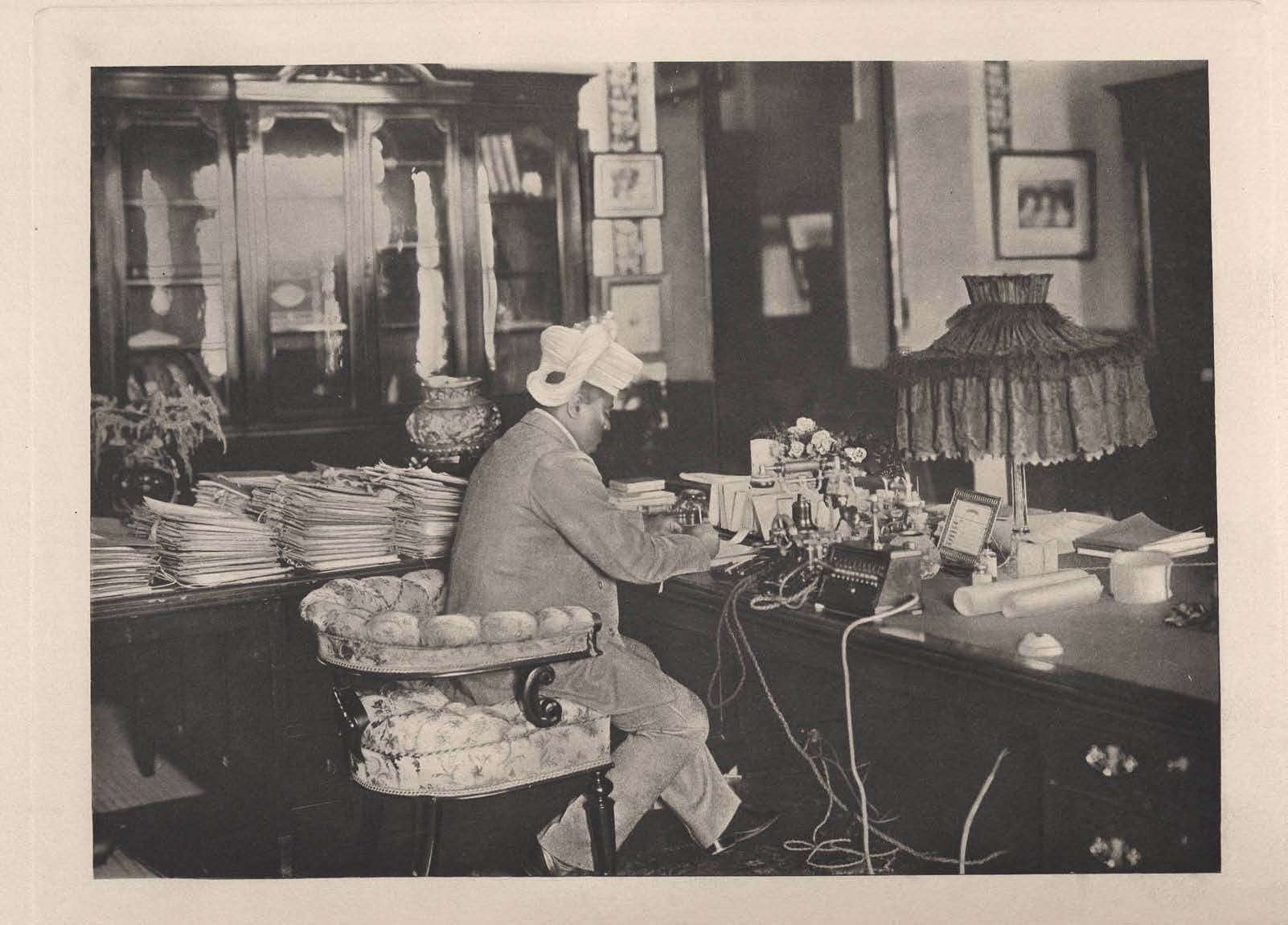
Maharaja Madho Rao Scindia’s political reforms.
On the political side Maharaja Madhav Rao’s regime was no less important Some of his most important reforms include the separation of the judiciary and the executive department , law codification, and the establishment of representative institutions such as the Majlis-i- Am, the Majlis-i-Qanoon, municipal bodies, local bodies such as district and pargana boards, Aukaf committees and Panchayat boards. The first municipality had come into operation in 1887 and it was typical of Maharaja Madho Rao’s tremendous energy that for several years he was the active President of Lashkar Municipality, The foundations of the Majlis-E-Qanoon were laid in 1912. The same year saw the establishment of Panchayats, an economical and democratic system of village administration, as old as India itself, but not fully realised in many other parts of the country until the present decade. The Majlis-E-Aam was set up in 1920 when the Maharaja emphasised the value of joint responsibility between a ruler and his subjects in reducing the burdens which a government would otherwise had to bear alone. Others features of administration to which he paid considerable attention and which are worth a place in this very brief review include his work for the criminal tribes, his work for the jagirdars and his development of female and technical education. The criminal tribes work is interesting in that Maharaja Madhav Rao was one of the first administrators in the country to realise the necessity of sympathetic reclamation of these otherwise lawless people. He set himself a most difficult task but the effect has been to develop the tribes people up to the point where they can take their places as villagers.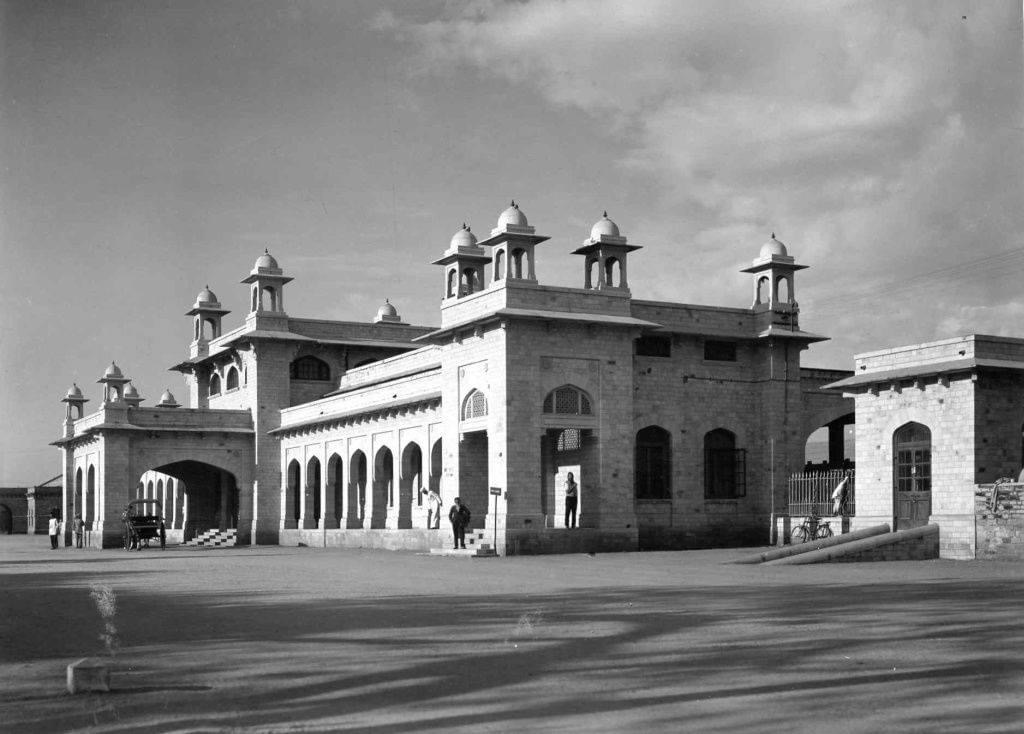
Town improvement.
Town ImprovementGwalior needs to thank Maharaja Madho Rao Scindia for the inception of its Town Improvement Trust which during its existence carried out about 50 schemes in Lashkar, and 25 in Ujjain. Notable were Chatri Bazaar, Daulatganj and Phalke Bazaar at Lashkar in which town more than Rs, 14 lakhs had been spent ; and the Indore Gate Road and Dewas Gate schemes at Ujjain where over Rs. 10 lakhs had been spent. Even more vigorous efforts are to be made however, and in 1939 the Durbar sanctioned a sum of Rs. 15 lakhs to be spent at different places. The Trust did flood prevention work costing Rs. 55,000 at Ujjain and an improvement scheme of Rs.41,000 at Bhilsa clearance scheme at Ujjain, costing over Rs.27,000, was done. An air survey of Ujjain was arranged. The annual budget of the Trust’s permanent establishment was met by an investment of Rs. 10 lakhs by the Finance Department.
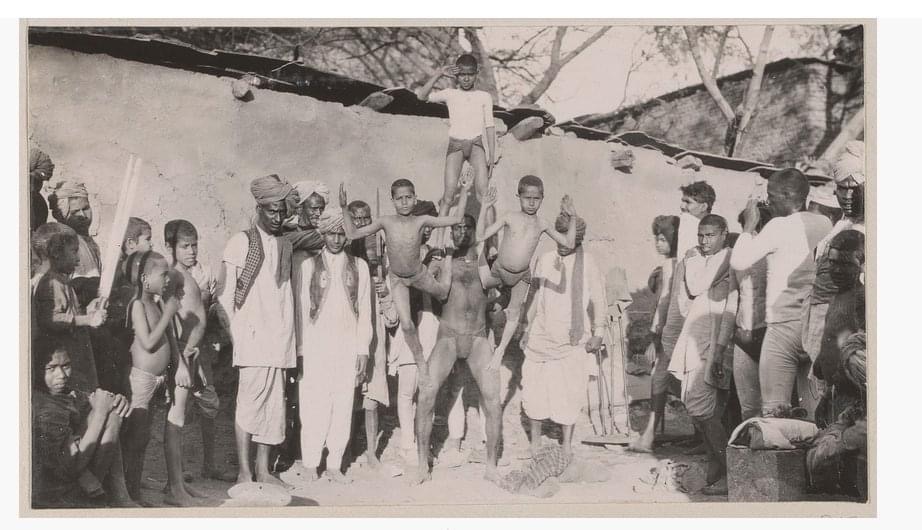
Rural development.
The urgent need for village uplift had been recognised by Maharaja Madho Rao Scindia And the State had done valuable work for the sanitation of villages the education of farmers in new methods of agriculture, improvement in live-stock and facilities of credit to the cultivators by means of Co-operative Societies financed by the state. His Highness Maharaja Shrimant Jiwajirao Scindia had announced a princely sum of Rupees one crore : for village uplift”. The Department of Agriculture of the Gwalior state came into existence on July 1, 1916 with Dr. Sam Higginbottom as Director of Agriculture and Mr. Don W. Griffin as Agricultural Engineer. The first period of three years was spent in organising the Department of Agriculture, establishing Central Experimental Farms, equipping the Agricultural Research Laboratories and in training necessary staff at the Ewing Christian College, Allahabad. Dr. R.L. Pendleton came as full time Director towards the middle of the year 1919. He tried his best to carry out as fully as possible the Darbar orders that were passed from time to time. The work, however, could be systematised till the Agricultural Manual was framed and brought into force in the year 1923. In the beginning, two Central Experimental Farms, one at Lashkar for the Gwalior Division and the other at Ujjain for Malwa Division, were established. As the soil and climate conditions at both of these places were extremely different, crop experiments had to be carried on different lines. The Agricultural Laboratory was established with two Divisions of Chemistry and Botany during the year 1917 under the guidance of Dr. Sam Higginbottam (the distinguished founder of the Allahabad Agriculture Institute) as Director of Agriculture with eminent assistants like Dr. R. L. Pendelton and Dr. L.A. Kenoyer as Botanist. Scindia Chemical Laboratory was primarily started for research work in Forest Products and run under the Trade Department had in course of time many of its activities curtailed and subsequently in year 1925 was transferred to the Agriculture Department, according to the new scheme both the aforesaid laboratories had been amalgamated. With the objective of educating cultivators, both morally and materially, Updeshaks, maintained from Zamindars Hitkari Fund, were put under the Agriculture Department in the year 1924 to work on lines laid out in Memorandum No. 22. This arrangement, however, could not be continued for a long time. Considering the importance of agriculture and allied sector, four posts of Naib Tehsildars for seed distribution were created in 1926. This number was quite inadequate as the extent of state was vast. When the new reorganising scheme was submitted to the Darbar. It was emphasized that if any useful purpose of the Department of Agriculture was to be served, that can only be achieved by having a body of men trained in the science and practice of agriculture with at least one man for each Tehsil to begin with. In the new scheme which was sanctioned in the year 1930 five posts of Inspectors and thirty-four posts of Naib Tehsildars (Demonstration and Propaganda) were sanctioned. By this arrangement nearly one man was placed in each Tehsil. It was expected that as a result of their constant and immediate touch with the agriculturists, real purpose of the Department will be fulfilled to a great extent. Besides the work of district demonstration and propaganda one motor lorry equipped with Cinema apparatus and a collection of agriculture products was also provided to form part of a moving exhibition. It was expected to draw large number of people for the Cinema Shows and thus induce farmers to take interest in what the Department was doing for them. About a dozen films of agricultural topics were obtained from the Department of Agriculture, U.S. America, and some more were added to stock by preparing them locally.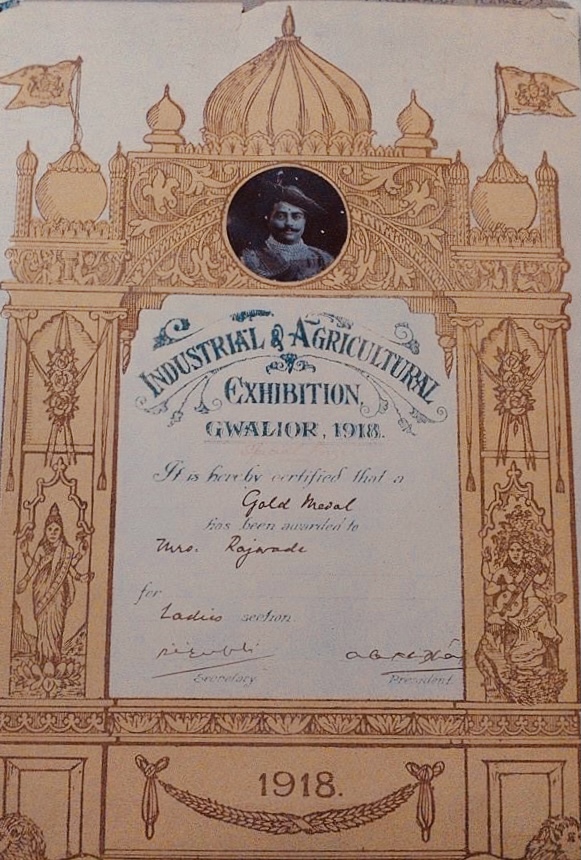
Mandis
Mandis are regulated markets which had played an important part in the economic development of the State. Agriculturists bring their produce to the mandi where it was sold by open auction, the sellers thus obtaining the most competitive prices. The management of these mandis was vested in local elected bodies, the mandi committees, each having eight members and a chairman,and including a zamindari member. These committees dealt with all local trade matters and acted as arbitrators in cases of dispute. In places where there was no municipality the mandi committee functioned also as a town committee. These committees were expected to be self-supporting and were authorised to collect licence fees from Adatiyas (commission agents), Dalals (brokers) etc., working in the mandis. They also collected Dharmada from factory-owners and on all pacca adat transactions put through the mandis. This amount was spent on charity and other works of public utility and beneficence. During 1937-38 two new mandis were opened at Chanderi and Bhander, making 16 mandis in Gwalior and 20 in Malwa. The total receipts and previous balance of the mandi committees during the year were Rs.86,062, expenditure Rs.47,508. But this was a bad year owing to heavy falls in the prices of cotton, wheat and other agricultural produce. 1937-38 revised bye-laws for the mandis were published, the effect being to provide a uniform basis for market transactions and thus facilitate trade by removing local differences and intricacies in the system of clinging, selling and purchasing, commission, brokerage, Dharmada and weighing charges in the business transactions put through the Mandis.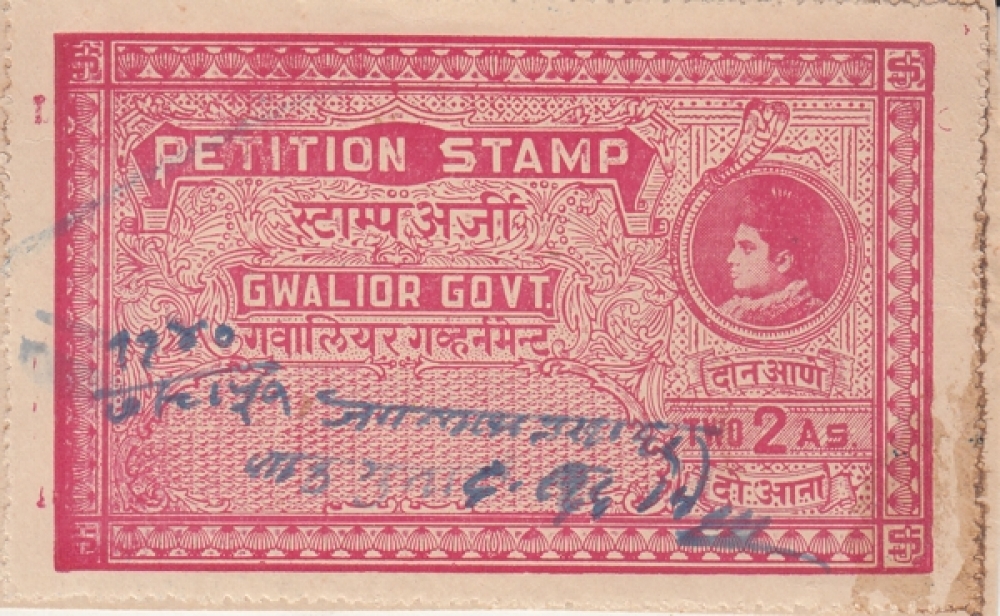
Judiciary.
Judiciary :Gwalior possessed an up-to-date system of Judicial administration which could stand comparison with any other part of India. A marked feature was the separation of Judicial from the Executive functions, which had been brought into force since 1908. The number of regular courts were 72. The lowest unit of the system was a Pargana Judicial Officer's Court and the High Court of Judicature at Gwalior was the highest court of appellate and original jurisdiction. Between the two there are the Courts of the District and Sessions Judges. District Sub-Judges, Sub-Judges, and City and Cantonment Magistrates. The Member for Law and Justice assisted by a semi- honorary pensioner Judge hears appeals and revisions from the decisions of the High Court from which appeals and revisions to the Durbar were allowed under the Law. This function of the Law Member was similar to that of the Judicial Committee or the Privy Council. Besides paid Judiciary there were honorary agencies exercising Judicial powers, the most important of them being the Panchayat Boards. There were a network of these boards covering the whole State and they were doing very useful work by deciding petty Civil, Revenue and Criminal cases at the very threshold of the litigants with practically no expense to them and much to the relief of the regular Courts.
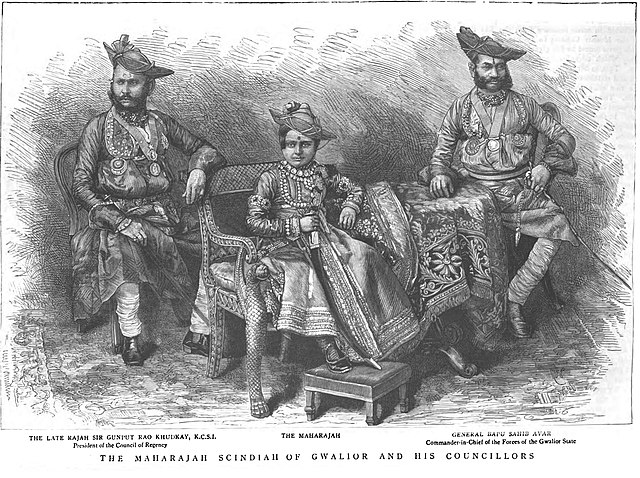
Representative Institutions.
Corresponding to the Legislative Assembly of India, there were two institutions in Gwalior, the one being called the ' Majlis-E- Qanoon or the Legislative Council ' and the other the ' Majlis-E- Am or the Representative Assembly.' The Majlis-E- Qanoon was a body whose business was restricted to pure legislation while the Majlis-E-Am deals with matters of general and public interest. These institutions together performed the functions of the Indian Legislative Assembly. The Majlis-E- Quanoon was founded in 1912 and consisted of official and non-official members. The non• official members were representatives of different interests of the people of the State, such as the Jagirdars, bankers, mill-owners, land-owners, cultivators and pleaders. Since the creation of the Council, it had consistently been the practice to place all legislative measures before it for its deliberation excepting those which were emergent and admit of no delay and such minor amendments in existing laws as had no relation to the general public. The Majlis-E-Am (Representative Assembly) was inaugurated in 1921. The business of the Assembly ranged over a wide field of administrative problems touching the various departments of the State and the com- position consisted of an overwhelming non-official majority of sixty. The official members had never been more than ten and had no vote. They merely listened to the debate of the non-official members and supply explanations or information where necessary. The resolutions passed by the Majlis-E-Am, unanimously or by majority had to be submitted to His Highness' Government who may sanction them or reject them.
Army.
Gwalior can lay the proud claim to had had a well-equipped and disciplined army. The Gwalior Government was allowed to maintain an army, the strength of which was governed by various treaties. In pursuance of a resolution passed by the Chamber of Princes in 1921, Madho Rao Scindia reorganised the Gwalior Army. 'All troops were designated Gwalior State Forces classified as ''A'' Class Troops, ``B`` Class Troops and Irregular Forces. Infantry, cavalry, batteries and transports were maintained in excellent condition. The splendid services rendered by the Gwalior troops in the Great War had been recognised more than once. .Eloquent tributes had been paid by various Commanders-in-Chief and Military Advisers. The total strength of the Army, was about 6,887 and the annual Army budget stood at Rs. 4,266,151.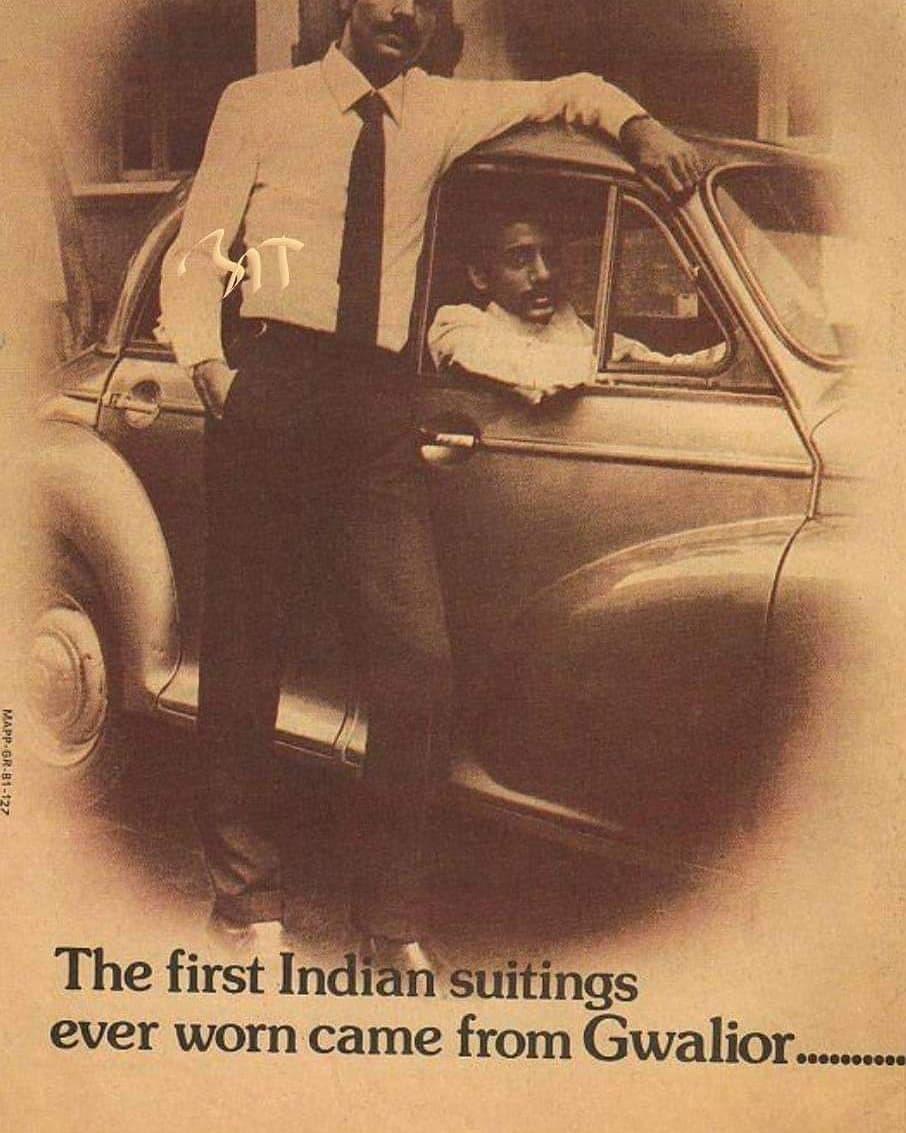
Commerce.
Maharaja Madho Rao Scindia realised during the early years of his administration that Industrial Development was the keynote of progress in the modern age. He was very anxious to see that the economic resources of the State should be fully exploited. To put his ideas into practice he started various industrial concerns with State capital. Not only this but through a liberal trade policy and by providing ample facilities he tried to attract capitalists and industrialists from out- side Gwalior to establish concerns in the State. As a result we find in the past a number of industrial concerns running successfully and providing employment to a number of persons. A part of Madho Rao Scindia' ambitious scheme was the Board of Economic Development established in 1920 as an advisory and consulting body with regard to matters of economic and commercial interest. The members included some of the foremost business magnates in India. The Mill Industry in Gwalior reaches great level. Three spinning and weaving mills at Ujjain and one at Gwalior were working successfully . Every effort was made to encourage the indigenous industries of which beautiful and artistic lacquer work done at Sabalgarh and Sheopur were noteworthy. Of the new schemes sponsored by the Trade Department to develop the resources of the State, the laying out of Madhonagar (Freeganj) at Ujjain is the most important. Every facility including the reduction or abolition of duties for the development of trade and commerce was given and as a result a new town has sprung up near Ujjain. Goods manufactured by industrial concerns-both State-owned and private-were exhibited in a museum maintained by the Commerce Department on the Station Road at Gwalior.
Post, Telegraph and Telephone.
Gwalior State had Post Offices of its own. The convention of 1885 changed their isolated nature and established an exchange system with the Imperial Post on terms of equality. During the rule of Maharaja Jiwaji Rao Scindia there were about 225 Post Offices in the State. Telegraph Offices stood at important places in the State, but they all belonged to the Imperial Telegraph Department. Lashkar, Gwalior and Morar were equipped with an up-to-date automatic telephone system with facilities to use the trunk line. In addition, Shivpuri and Ujjain had got magneto exchanges. Telephonic communication was also there between Shivpuri and Gwalior. Railways Gwalior State owned over 500 miles of railways. out of which 200 miles was Broad Gauge worked by the management of the G. I. P. and B. B. and C. I. Railways. while the remaining 300 miles were Narrow Gauge worked directly by the State. This latter known as the Gwalior Light Railway has had a romantic history. It started as a toy railway for Madho Rao Scindia, while he was a boy. From a mere play-thing it has grown to a net-work of railways linking up distant places in the districts with the Capital and providing easy means or communication for the people. There were four sections on this line.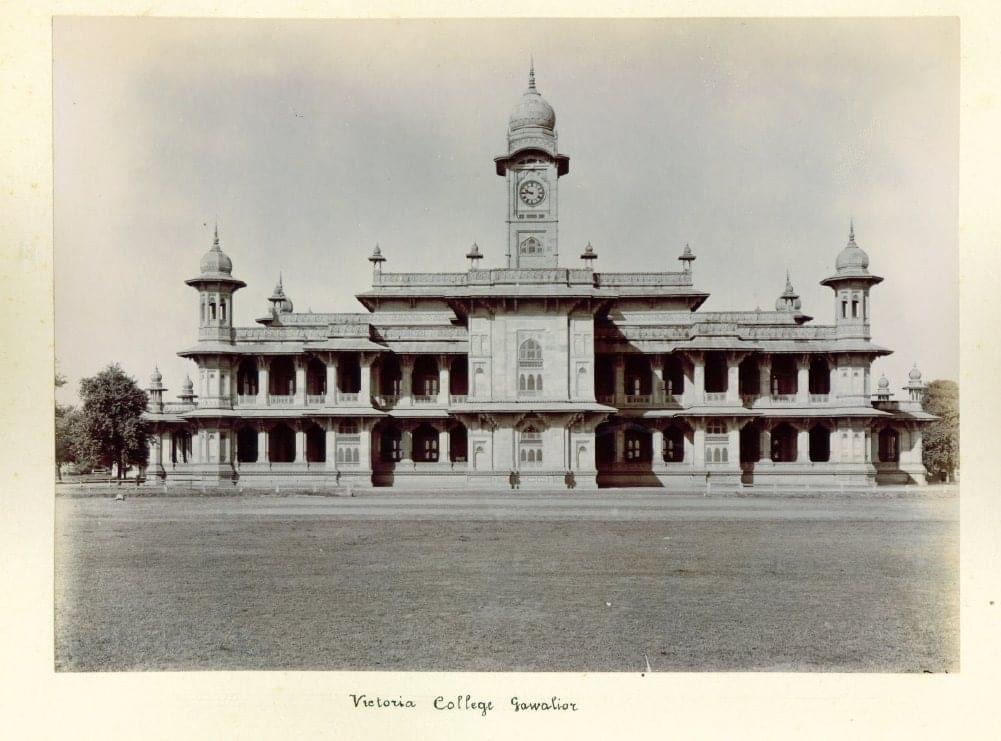
Education.
The State spent about Rs. 1.41⁄4 lacs per year on Education. Primary Education was free throughout in the State. The number of primary schools for boys was 854 with 42,230 students, while there were 131 primary schools for girls with 7,312 students. Besides these schools maintained by the Government, there were 153 aided schools for boys and 13 for girls with 5,855 and 330 students, respectively. Self- supporting institutions for boys and girls numbered 136 and 12 with 4,124 and 359 students, respectively. There were 65 English secondary schools for boys teaching 9,911 scholars. Secondary schools for girls numbered 13 and taught 2,726 girls. Lashkar had a full fledged Degree College which provided instruction up to the B. A. and B. Sc. standards, while Ujjain had an Intermediate College. The Education Department had devoted special attention to Female Education and as a result literacy among females of the State showed a remarkable increase, during the decade 1921-31. Among the institutions providing vocational training and special type of education, might be mentioned the Technical Institute, the Madhav Music College, the Ayurvedic College, the Sanskrit Mahavidyalaya all at Lashkar, the Technical Institute at Chanderi and the Brahmacharyashrama at Shivpuri. The Maharani's Girls' School was opened in 1898 by His Highness the late Maharaja Madhava Rao Scindia and named after the late Maharani Sahiba who took a keen interest in girls' education. When in 1901 a separate: section for the management of girls' school in the State was created in the Education Department, the management of school was taken over by it. In 1905 the school was raised to the Middle standard. Two special classes one for the training of lady teachers and the other for teaching widows, opened in 1906. These proved to be the precursors of the Sevadasan. The Sardars' Daughters' School was founded in 1902 under the patronage of the late Jija Maharaja for the special and specific purpose of giving training to the daughters of the Sardars and high officials of the State to fit them for their special walks of life. The institution was under the direct control and guidance of Her Highness the Maharani Sahiba Scindia.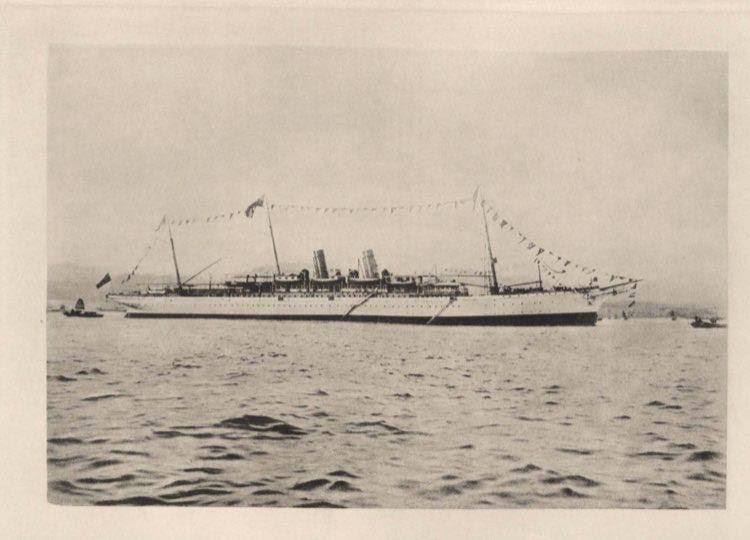
Medical Relief.
Western methods of medicine and surgery were first introduced in the State in the year 1887. A modest beginning was made with half a dozen institutions and as these gained in popularity, new hospitals and dispensaries were opened year after year and the older institutions were re- organised and their staff and equipment increased to meet the increased volume of work. Hospitals and dispensaries numbering 111 provide medical aid to the people of the State during the rule of Maharaja Jiwaji Rao Scindia. A special feature was the network of Ayurvedic and Unani dispensaries which provided popular treatment at cheap cost. Use of indigenous drugs was being encouraged by the Department. Standardised preparations were administered by qualified doctors. Lashkar and Ujjain had up-to-date and well-equipped hospitals complete with modem medical appliances. The Jija MaharajBalrakshak Sabha which was established in 1924 to reduce infant mortality by providing maternity homes and doing extensive propaganda was doing useful work under the supervision and control of the Medical Department. Eighteen maternity homes and child welfare centres had been opened at different places in the State by the Sabha. Health and baby weeks were organised at suitable places and propaganda work was done. The State spent Rs. 6 lacs on the Department during the rule of Maharaja Jiwaji Rao Scindia. About 14 lacs of patients ,counted by day-units were treated every year.
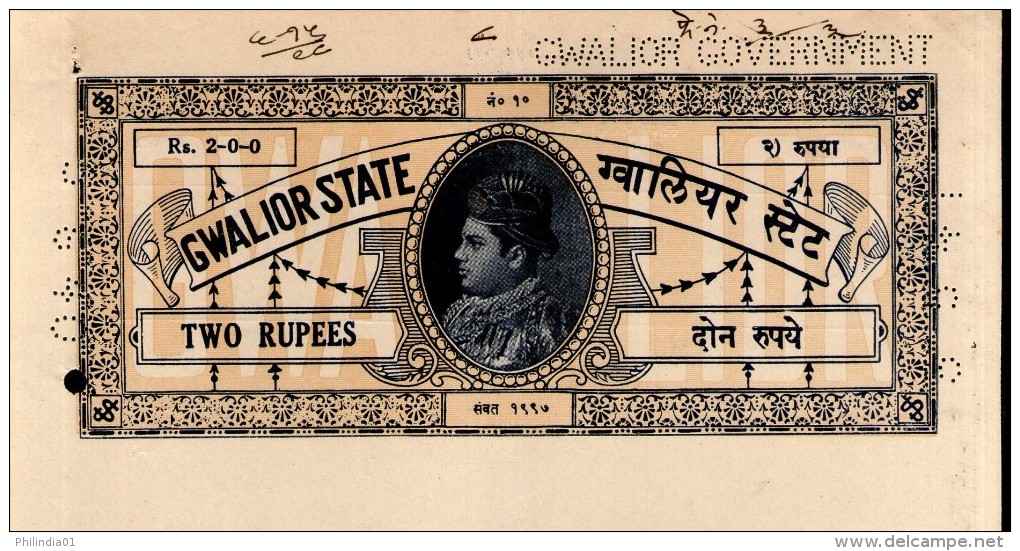
Statistics
Accurate and full statistics are of prime importance in trade and commerce and the Statistics Section of the Commerce Department spared no effort to improve the services which it rendered to the Durbar and the commercial community at large. Fourteen different types of publications and periodical returns were issued : annual agricultural and commercial statistics, including manufactures and trade ; annual rail borne trade statistics ; annual general statistics of the State ; annual statement of working conditions of factories and industrial concerns worked by mechanical power ; annual statement of mineral production ; annual statement of newspapers published in the State ; annual synopsis of principal events of the Commerce Department; annual statement of cotton woven goods held in the cotton spinning and weaving mills in the State ; annual statement of cotton spinning and weaving nulls in the State ; annual statement of cotton stock held by the trade in the State ; annual statement of salt and saltpetre production statement of books printed on the presses in the State ; monthly statement of cotton consumed in the cotton spinning and weaving mills in the State and monthly statistics of cotton goods produced in the spinning and weaving mills in the State. Publicity for these returns was afforded through the “ Jayaji Pratap ”, the State newspaper.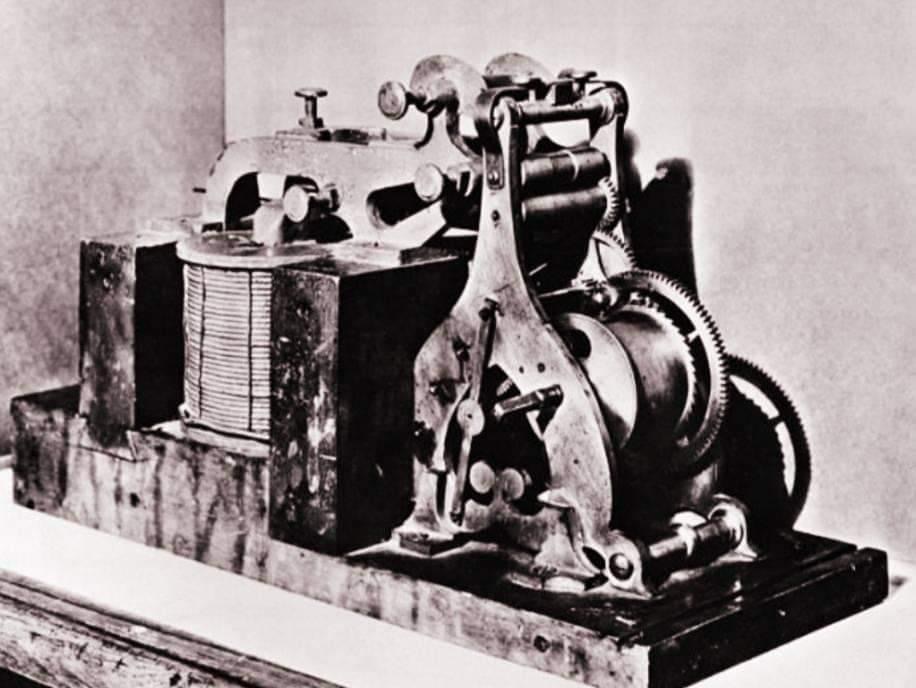
Industrial Museum.
The Gwalior Industrial Museum at Lashkar was started in 1917 to advertise the arts and crafts of the State and to popularise the industrial products of Gwalior. In it were displayed specimens of the arts and crafts of the State and the products of State-owned and private concerns. An attractive stall was maintained by the Museum on Gwalior railway station (G.I.P.) to give an idea of the State’s manufactures to passing travellers. As cotton is an important commodity in the State a Cotton Contract Registration Office was established in 1936 to remove the difficulty under former laws of ascertaining the genuineness or otherwise of forward contracts whether the parties at the time of making them intended to give and receive delivery of goods or only to pay and receive differences of price in settlement. The Office registered contracts for forward deliveries of ginned and unginned cotton and cotton seeds. There was also the Sowda Forward Delivery Association, a voluntary association of traders and brokers in the forward market, which regulated relations between its own members. The Department was also energetic in maintaining the reputation of Malwa cotton in outside markets by punishing such malpractices as mixing cut seeds in cotton.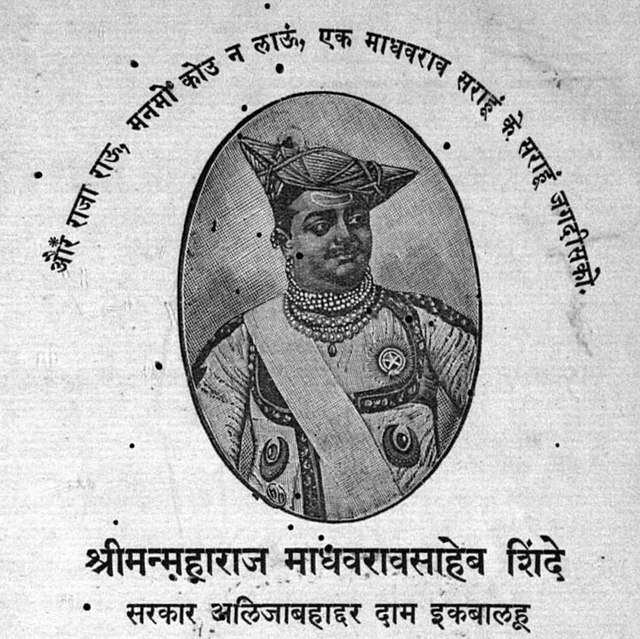
Constitution of Gwalior State
The late Maharaja Madho Rao epitomised his views on political progress when at the inauguration of the first session of the Majlis-i-Am in November 1920,“ I regard as bad the practice of conceding people their demands when they become tired of demanding them and, becoming desperate, are prepared to create trouble Keeping therefore the changing times in view and working with foresight, one should act so that the people had sympathy with the Government and do not lose confidence in it.” This good example had been followed by Maharaja Jiwaji Rao Scindia who initiated his scheme for reforms almost immediately after he took his powers in November 1936, In a speech in Majlis- E-Aam he said : “ I wish to make this body a true representative of different shades of opinion and a responsible guide in matters of administration.” The Constitutional Reforms Committee of Gwalior state included among its personnel members of the Majlis-i-Am a house of the legislature and the results of its work were included in the Proclamation which the then Maharaja Jiwajirao Scindia read at his Birthday Durbar in June 1959. In essence this proclamation of a new constitution set up two new houses of legislature—the Praja Sabha and the Samant Sabha— to replace the Majlis-i-Am and the Majlis-i-Kanoon. Much wider in their powers than the bodies which they replaced, the Sabhas had powers not only to ask questions and discuss the budget but also to initiate legislation. The Samant Sabha or upper house acted as a revisory body for legislation sent forward from the Praja Sabha or lower house. The whole scheme, which was clearly set out in the Ruler’s proclamation, was regarded as being well in advance of the educational standards of the State and of any demands which agitators might have formulated.
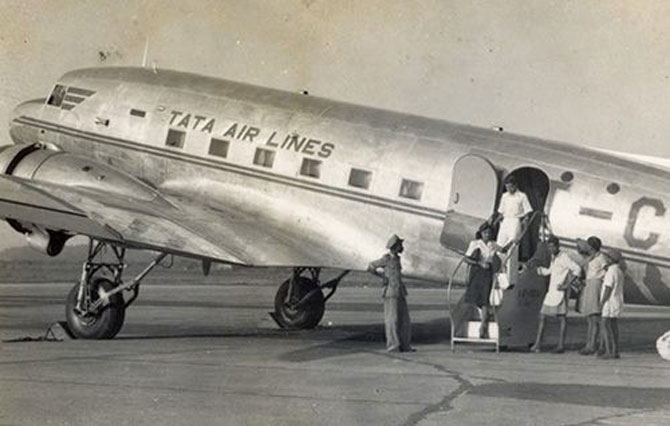
Air Services
An addition to the forms of transport serving the State has been the aeroplane. Tatas’ Bombay- Delhi air service passed through Gwalior, making a halt at the Maharajapur Aerodrome near Lashkar. The flying boat service between England and Australia called at the Madhosagar Lake. Eleven miles south-west of Lashkar, Madhosagar had a water surface of 7.5 square miles, giving ample room for the largest flying boat to alight. An airport was rapidly completed in the shore of the lake, and included landing jetty, resthouse for passengers, colony to house R.A.F. officers. Imperial Airways officials, Burmah Shell Ltd., a wireless station designed to aid incoming aircraft, and a fully equipped meteorological station. All modem amenities such as electric light and fans, telephones, drainage and water had been provided and the road connecting Madhosagar to Lashkar was improved for fast traffic. The flying boats alight about two furlongs from the shore and passengers were brought by launch to the jetty. Maharajpur aerodrome, lies six miles to the north-east of Lashkar. At night a powerful light beacon high up on the Fort signals the letter “ G ” for the guidance of aircraft. These arrangements which had put Gwalior on the air map of India and of the world, were important because they bring not only the State, but also a large part of India as part of trans national air routes.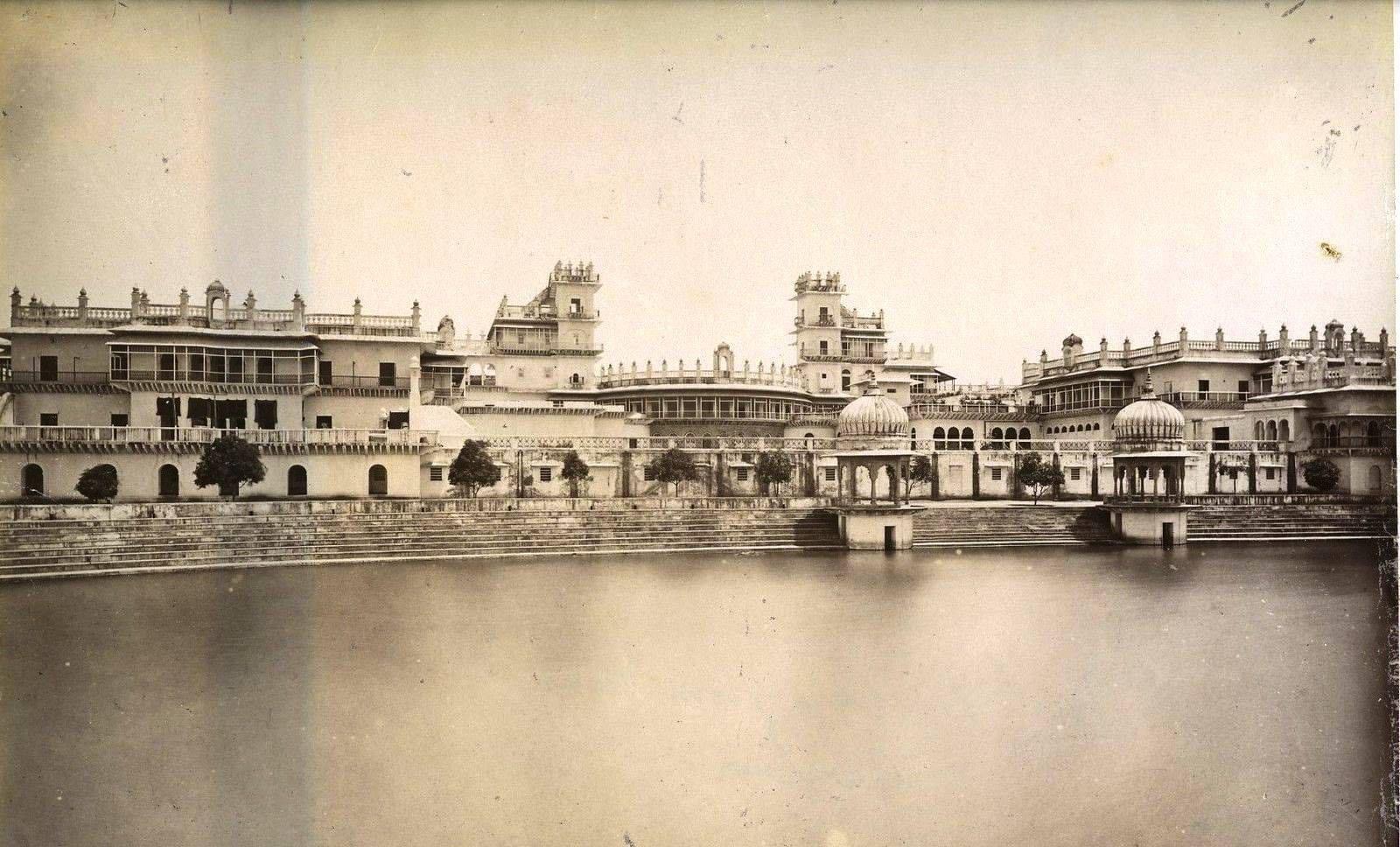
Social Legislation
Considerable progress was made in social legislation in Scindia’s Gwalior, the first Act of importance being the Gwalior Child Marriages Restraint Act which came into force in 1932. When legislation on this matter was proposed the Majlis-i-Am passed a resolution in favour of a Bill by an overwhelming majority. Marriage below certain prescribed ages is penalised 12 years in the case of girls and 16 years in the case of boys. The Act does not declare under-age marriages void but provides punishment—fine or simple imprisonment, or both— for the husband and the persons actually participating in the celebration of such a marriage. The Act further prohibited unequal marriages by providing that no person of or above the age of 45 shall marry a girl whose age may be below 16 years. A breach of this provision was also punishable with fine or simple imprisonment or both. To make these prohibitions effective the Act empowered courts to issue injunctions to prevent the celebration of marriages coming apparently within the scope of the Act. The Gwalior Widow Remarriage Act came into force in 1936, a resolution on this matter having been introduced in the Majlis-i-Am by a non-official elected member. The resolution was passed by a majority. This Act was of a permissive character and was designed to grant liberty to those Hindus who may wish to adopt a different custom in accordance with the dictates of their conscience. A difference of opinion existed concerning the validity of marriages contracted by Hindu widows and the legitimacy of children of such marriages. The Act which was intended to promote good morals and public welfare, removed all legal obstacles to the remarriage of Hindu widows. A special feature of the Gwalior Act was that no person, society or panchayat could ex-communicate any person or widow contracting such a marriage. Nor could any person assisting in the celebration of such a marriage be excommunicated. Disobedience of this rule was punishable by a fine which may extend to Rs. 500. If the transgressor be a society or panchayat every member of such body would had been so punishable. The Gwalior Nukta Act which became law in 1938, was an attempt to control wasteful ceremonial expenditure. In particular it dealt with the dinners which surviving relatives customarily gave to caste people in commemoration of a dead person. Under the Act the number of caste people who could be invited to participate in such a dinner was restricted to 5 1 . Breach of this rule was punishable by fine,simple imprisonment or both. The Act also provided for the issue of injunctions to prevent i infringement of the law, and for enhanced punishment if the Act is contravened after service of such an injunction. In order to prevent caste tyranny against persons complying with this law, the Act provided that such person shall not be excommunicated, but if an attempt to excommunicate him be made, every member of the panchayat concerned shall be punishable with a fine or simple imprisonment or both.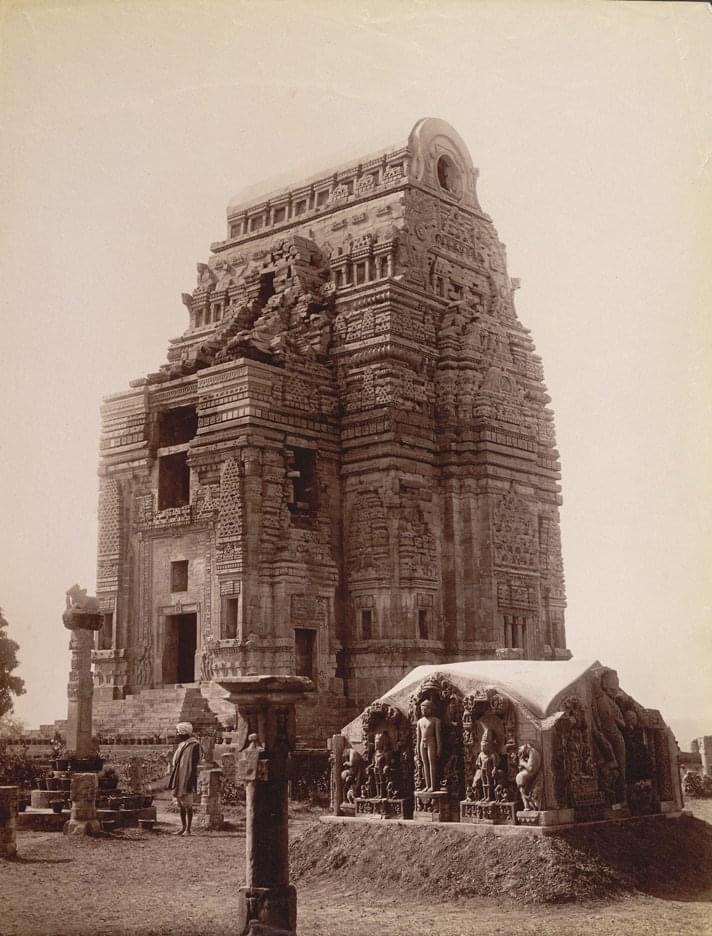
Heritage Conservation
It was in 1913 that Maharaja Madho Rao Scindia did a distinct service to Indian archeology and heritage conservation by instituting a regular department to explore and preserve the precious relics of ancient art, architecture and culture in his State. The new department was put in charge of an officer, Mr. M. B. Garde, who had completed his archeological training under Sir John Marshall, one of the greatest Directors-General of Archeology, India has had. The outline of policy for the department, as laid down by the late Ruler, included three objects : exploration, preservation and education. By education is meant the creation of public interest in these ancient relics through the Museum, publications and other activities. The main task of the department during the first six years of its existence was to compile a complete and accurate History of monuments. Every important monument was visited and notes were made of its history, the legends connected with it, its architectural and artistic features, its inscriptions if any, its condition and the measures necessary for its preservation. Information was also collected about local cults, place-names, coins and other minor in fact everything that was likely to throw light on the ancient history of the State. Photographs and drawings were made and mechanical estampages were prepared of all available inscriptions for permanent record. As a result of this detailed exploration a number of ancient sites, buildings, sculptures and inscriptions, hitherto unknown, were discovered and new tight shed on many a monument regarding which the information already available was either inaccurate or incomplete.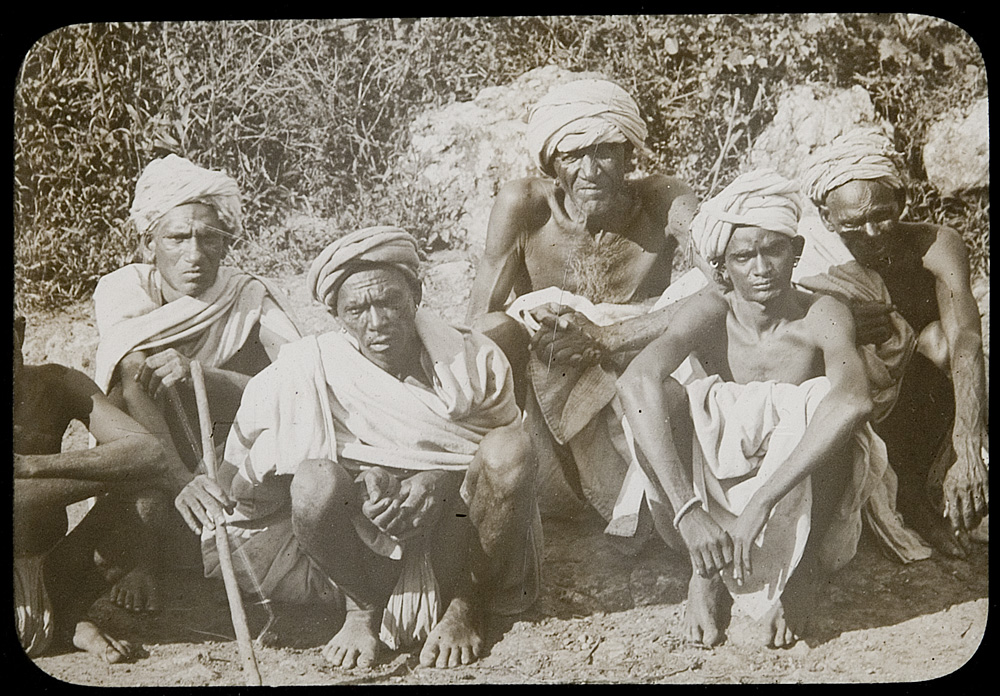
Bhils and Harijans
The aboriginal tribes in the State received special attention. Two residential schools for Bhils and Bhilalas and a number of day schools were established at suitable centres in the forest tracts. In 1938 there were II schools and three free hostels for Bhil and Bhilala children, and two more schools for the Saharias, a tribe living in Sheopur district. There were 17 State and four aided Harijan schools, and where local sentiment permitted, the Durbar placed no obstacle in the way of Harijans entering the ordinary State schools. A few aided night schools in the larger towns received departmental encouragement in order to foster adult education.
